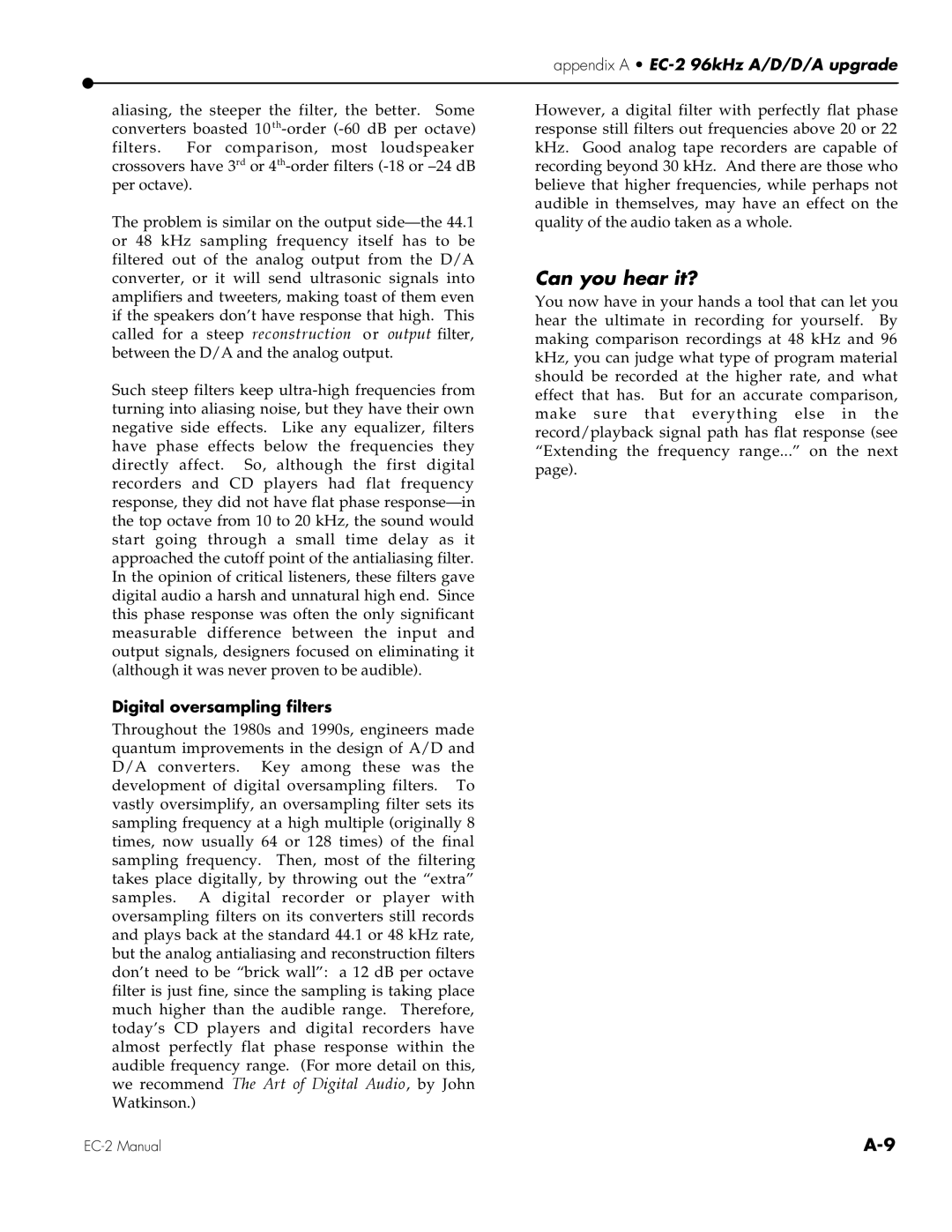appendix A •
aliasing, the steeper the filter, the better. Some converters boasted 10
The problem is similar on the output
Such steep filters keep
Digital oversampling filters
Throughout the 1980s and 1990s, engineers made quantum improvements in the design of A/D and D/A converters. Key among these was the development of digital oversampling filters. To vastly oversimplify, an oversampling filter sets its sampling frequency at a high multiple (originally 8 times, now usually 64 or 128 times) of the final sampling frequency. Then, most of the filtering takes place digitally, by throwing out the “extra” samples. A digital recorder or player with oversampling filters on its converters still records and plays back at the standard 44.1 or 48 kHz rate, but the analog antialiasing and reconstruction filters don’t need to be “brick wall”: a 12 dB per octave filter is just fine, since the sampling is taking place much higher than the audible range. Therefore, today’s CD players and digital recorders have almost perfectly flat phase response within the audible frequency range. (For more detail on this, we recommend The Art of Digital Audio, by John Watkinson.)
However, a digital filter with perfectly flat phase response still filters out frequencies above 20 or 22 kHz. Good analog tape recorders are capable of recording beyond 30 kHz. And there are those who believe that higher frequencies, while perhaps not audible in themselves, may have an effect on the quality of the audio taken as a whole.
Can you hear it?
You now have in your hands a tool that can let you hear the ultimate in recording for yourself. By making comparison recordings at 48 kHz and 96 kHz, you can judge what type of program material should be recorded at the higher rate, and what effect that has. But for an accurate comparison, make sure that everything else in the record/playback signal path has flat response (see “Extending the frequency range...” on the next page).
